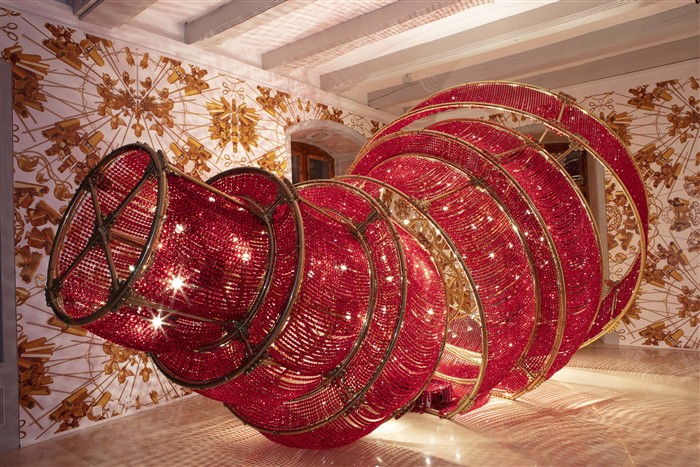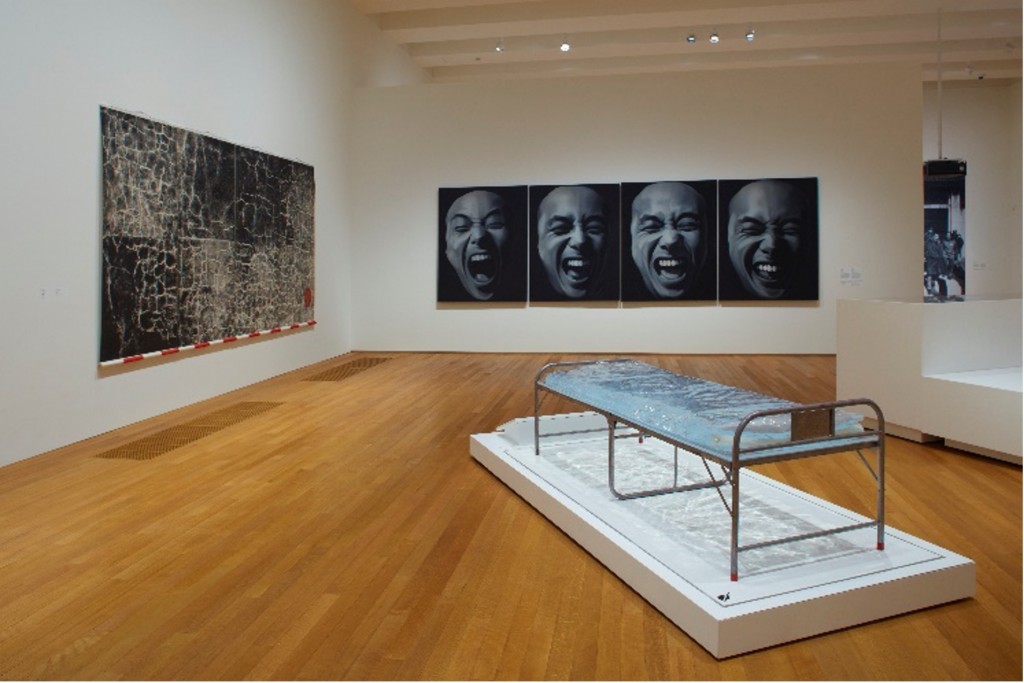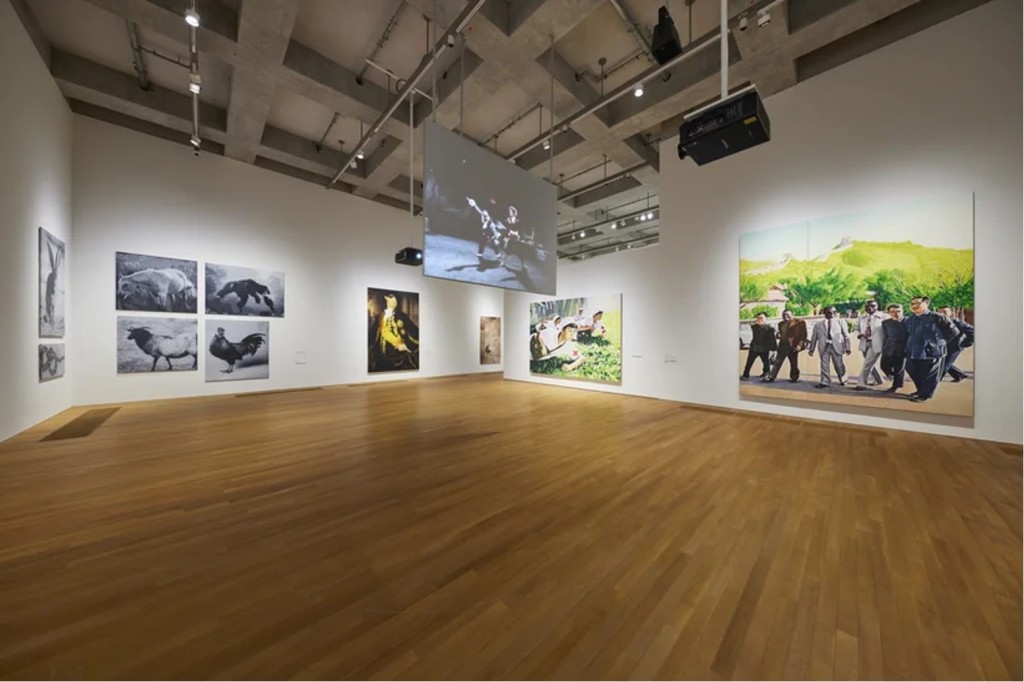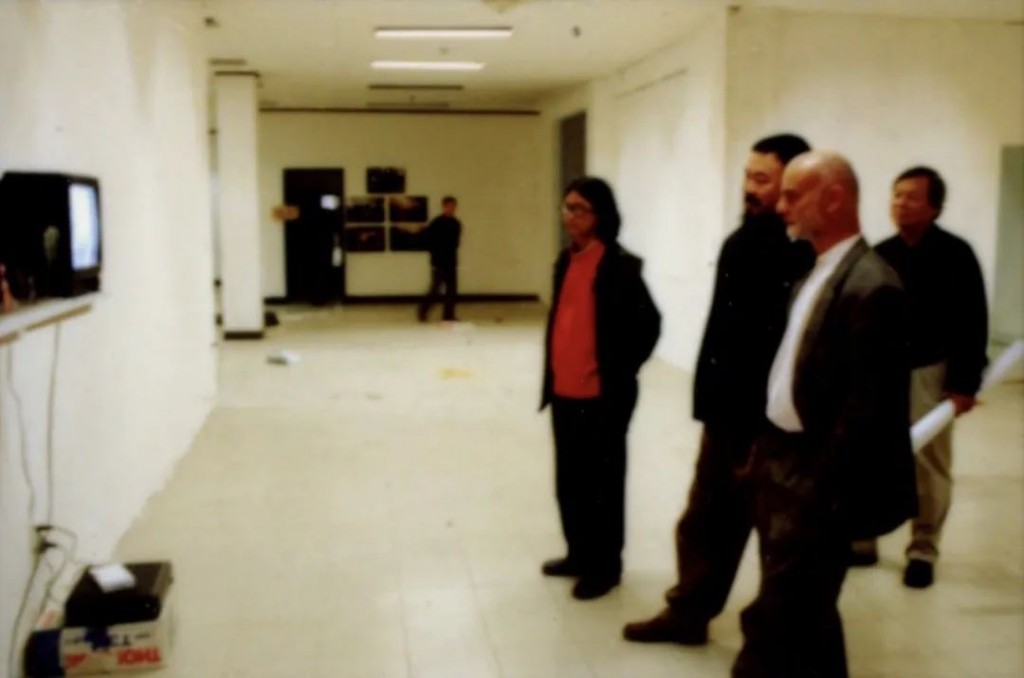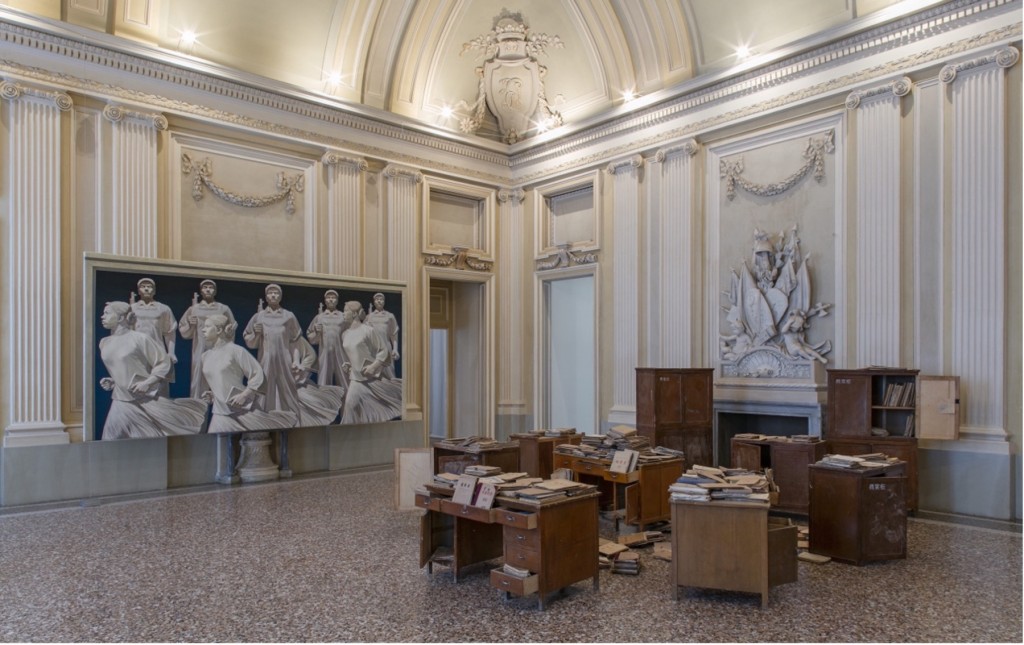Setting his foot 1979 in China, right into the second year of the country’s epochal era of reform and opening-up, Uli Sigg, the avid collector who is bathed in the category of Western post-war avant-garde art, now embarked his new business voyage, of which soon morphed into an odyssey of art exploration. Sigg immersed himself in the forefront of China’s contemporary art scene from the early 1990s. This was a period when the perspectives of art institutions where still taking shape, and the artist network was yet to be established. It was also an era of exploring works whose value was not yet firmly grounded, capturing the essence of a burgeoning artistic landscape.
Benefiting from Sigg’s distinctive taste projecting from an institutional perspective, his collection of Chinese contemporary art encompasses a wide array of styles and mediums from representative artists. This includes painting, printmaking, sculptures, installations, performance, photography, digital arts, and more, all of which were meticulously archived and curated into a collection prepared for institutional research and acquisition. In 2012, Sigg donated 1,463 pieces from his collection to the M+, with the vast majority of these works remaining in Hong Kong.
As a Western collector who began systematically collecting Chinese contemporary art in its nascent stages and witnessed its vibrant landscape unfold, why did Sigg choose to persist in adopting his collection approach from such an institutional perspective? Through this lens, what are the pivotal moments of contemporary Chinese art? Why does he believe that the canon of contemporary art remains unwritten? Delve deeper into Sigg’s insights on art collecting through LARRY’S LIST’s exclusive interview with this influential Swiss collector.
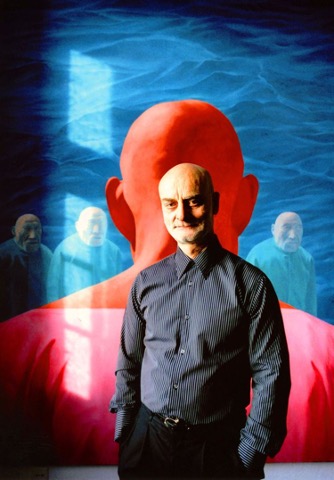
Surveying the Evolution of Contemporary Chinese Art
Starting his venture in the early 1990s and climaxing with the donation to M+ in 2012, this Swiss collector’s devotion to Chinese art spans over three decades. Uli Sigg’s art collection traverses multiple pivotal phases in the realm of Chinese contemporary art which could hardly be reduced to the mere chronicles: the earliest pieces can be dated back to Cultural Revolution. Then, morphing into the 1970s to the mid-1980s, “The Stars Art Group” and “No Name Group” (mid 1970s) represent a period where Chinese artists’ subjects transformed from the socialist realism narrative to epistemological quest into the new status quo, upholstered by individual creativity explosion. Into the 1990s, the period is epitomized by movements like ’85 New Wave, “Post-Sense Sensibility” etc. Ultimately, from the turn of the millennium to the present, the Sigg Collection, once more, testifies to the phenomenal shift which presents the younger Chinese artists as more prominent players on the global stage.

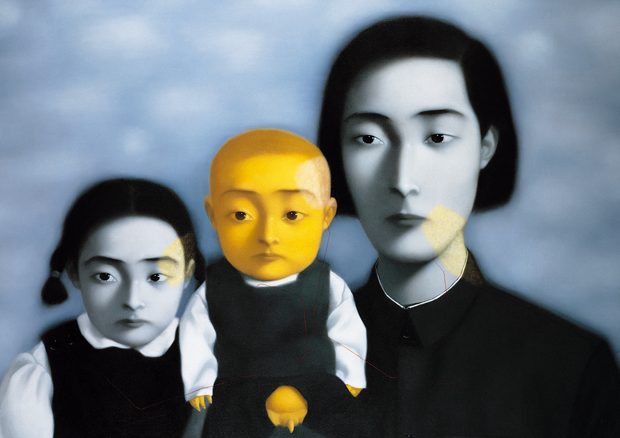
The rapid evolution of creativity gave birth to a wave of groundbreaking waves. In an era overshadowed by the Cold War’s lingering tensions, many masterpieces went unnoticed. In particular, Western art institutions, preoccupied with traditional craftsmanship and antiquities, remained largely oblivious to contemporary art scene in the East Asia. Recognizing this disparity, Sigg endeavored to bridge the gap by constructing his collection system in the early 1990s. Comprising works from over 350 artists, his collection of Chinese contemporary art flows like a complex tapestry which weaves into the nuanced social patterns and fabric of the times.
In the latter half of the 1990s, Uli Sigg travel between Chinese and Western societies to bridge discussion between artists and curators from the East and West, laying the groundwork for the Chinese contemporary art to be recognized in the Western sphere. Sigg, alongside Leng Lin, orchestrated the first-ever international art auction within the Chinese mainland at Sungari International Auction Co., Ltd. In 1998, he founded the Chinese Contemporary Art Awards (CCAA), for which would become the prestigious M+ Sigg Prize. It was also during this time that Sigg introduced Chinese contemporary art to Swiss curator Harald Szeemann, who, based on his own research, incorporated the works of 19 Chinese contemporary artists in the 48th Venice Biennale in 1999. Fast forward to 2005, Chinese pavilion premiered as a national representative at the Venice Biennale, approximately synchronizing with Sigg’s “Mahjong: Contemporary Chinese Art from the Sigg Collection” at the Museum of Fine Arts Bern, a milestone facilitating cross-cultural discourse between Chinese contemporary art and Western society.
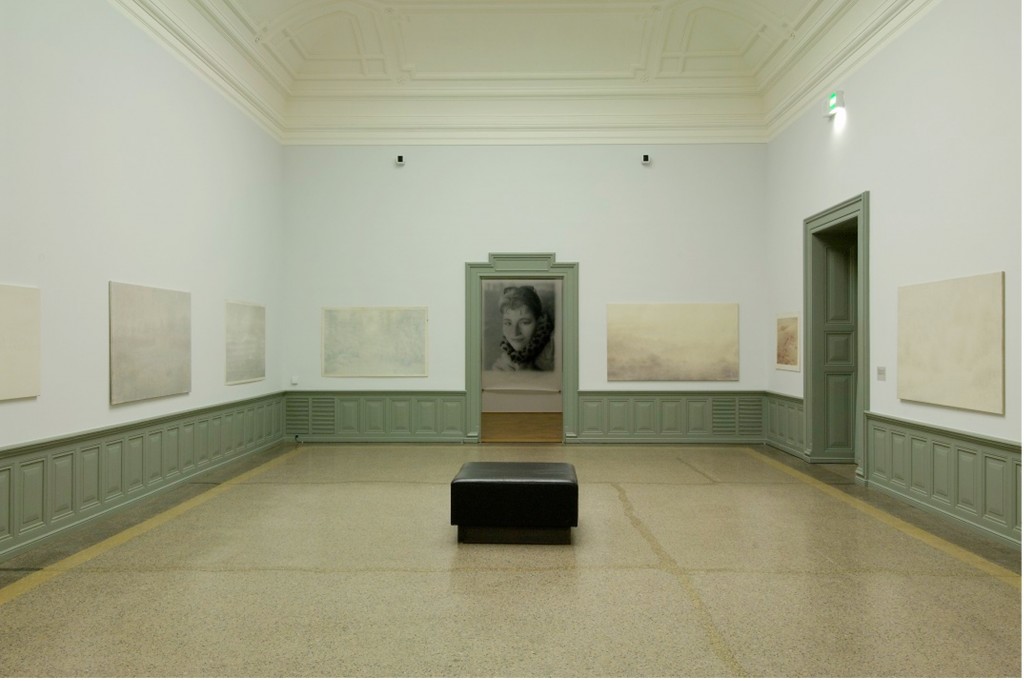
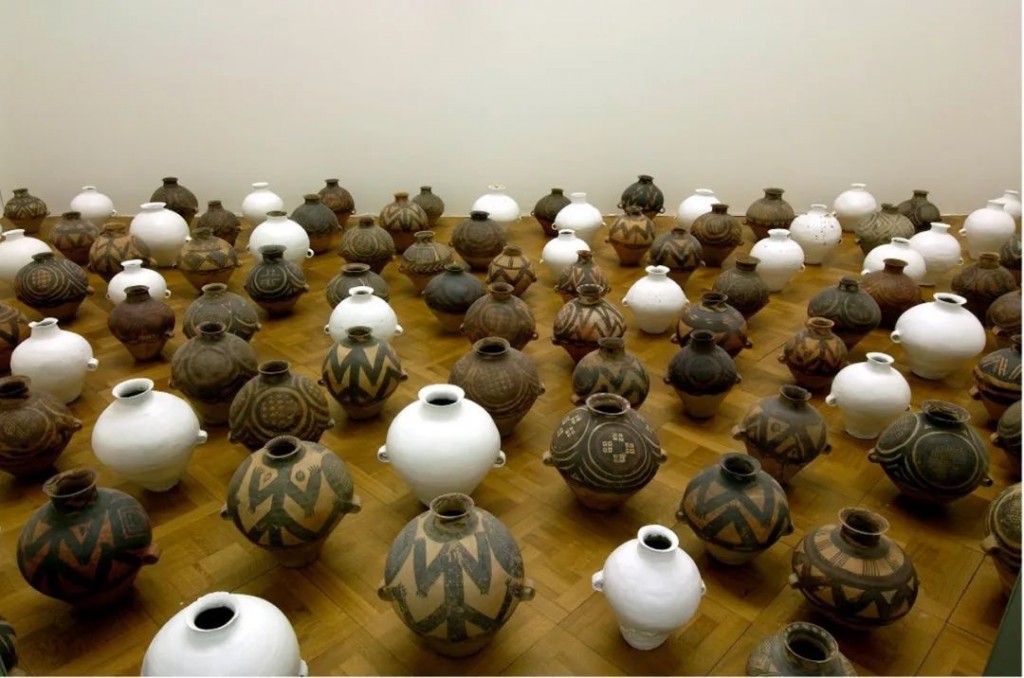
Collector As the Researcher: Uli Sigg’s Journey in Chinese Contemporary Art
A panoramic and encyclopedic art collection transcends beyond the pursuit of sheer quality and quantity; it intricately engages with the diverse paradigms and mediums of Chinese contemporary art from an institutional angle, echoing the myriad social reflections presented by the artists. Sigg proposed a “web” collection structure, where artworks are not simply arranged in a linear fashion nor categorized hierarchically, but rather their comprehensive significance of each piece is determined by their coordinates within the overarching structure, resonating within the complex web of interconnections.
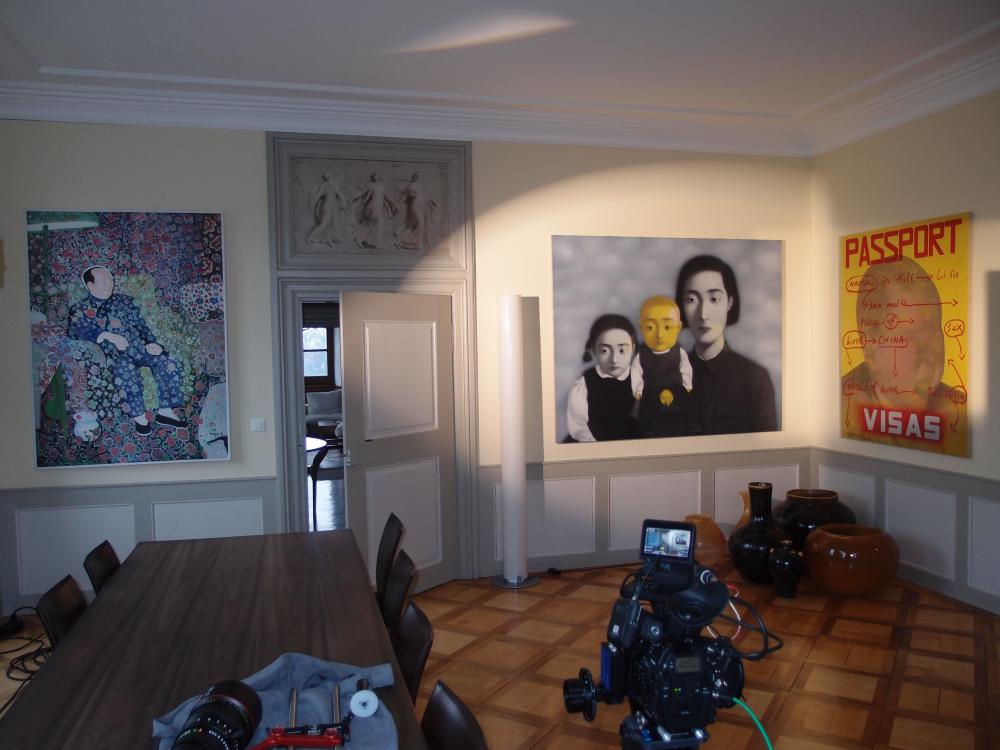
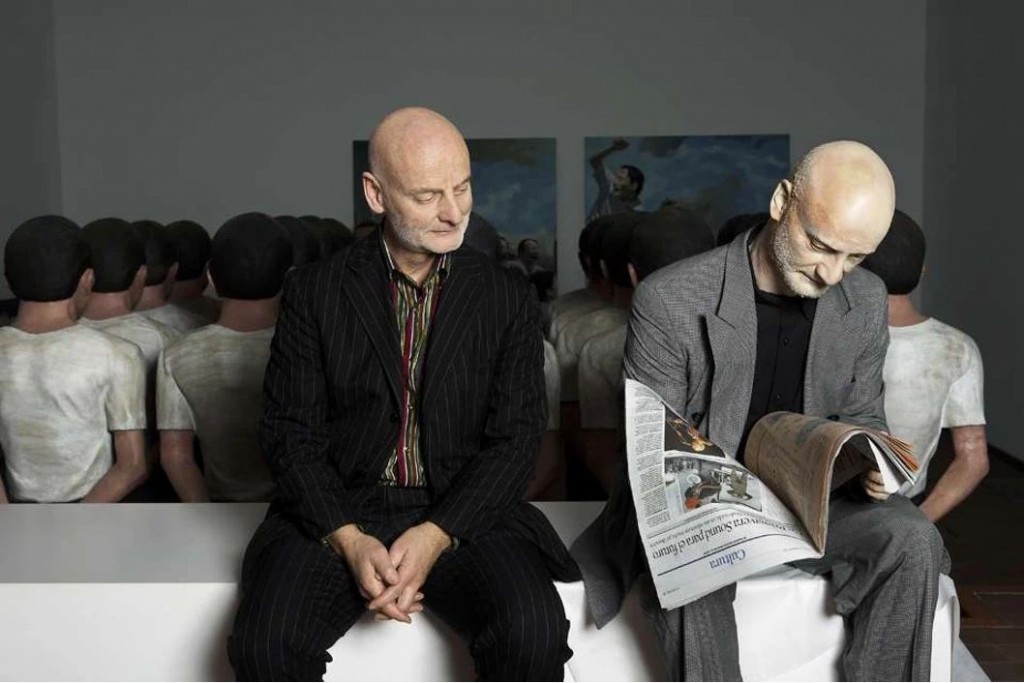
The concept of a “web” collection urges collection to temper their personal biases, allowing the individual viewpoints do not drown out or obscure the intrinsic voices of artworks. It is perhaps this dedication to objectivity that prompts Sigg to identify himself more as a “researcher” than a mere “collector.” In his reflections, he states, “While the public may see me as a collector, I perceive myself rather a researcher of my ultimate study object which is China. And for art, I just happened to be in a financial position to acquire some of the fruits of my research.”
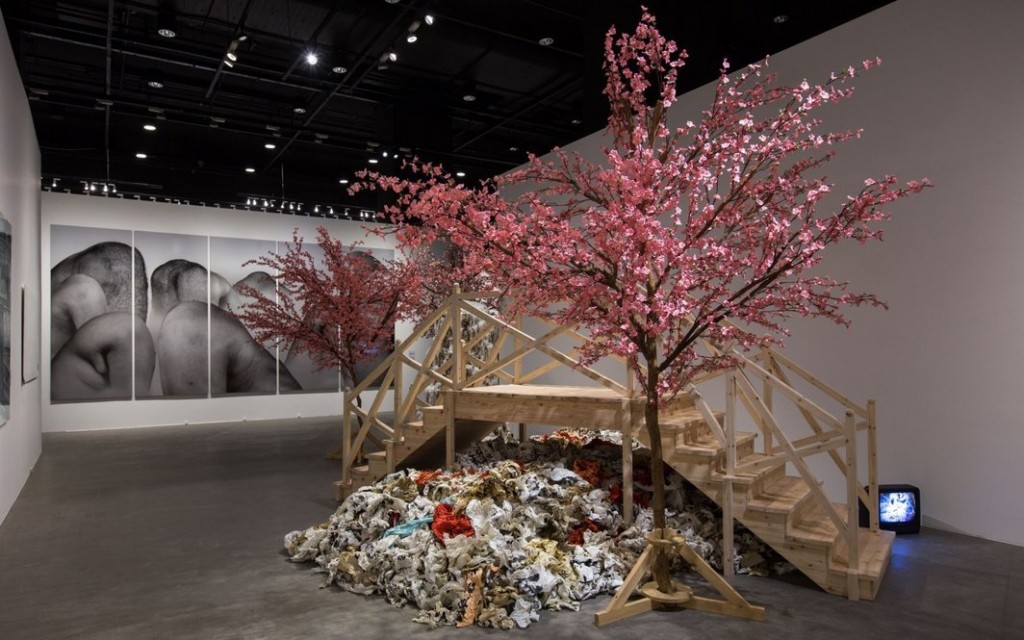
Prior to his donation to M+, Sigg amassed extensive experience across various domains, including establishing awards, assembling Art prize committees, supporting artists, and facilitating in archival research. Over the past three decades, he advised or co-curated more than twenty collection exhibitions, each accompanied by meticulously crafted catalogue publications. These publications played a critical role in galvanizing efforts by collectors and institutions to address the lacunae in documenting Chinese contemporary art. Within these exhibitions, artists captured the zeitgeist of their respective epochs, tracing the evolution and ramifications of artistic movements amid the tumultuous transitions in Chinese society. These artworks serve as poignant reflections of the profound impact, nuanced reactions, and enduring cultural identities forged admist the interplay between indigenous sensibilities and the influx of Western influences.
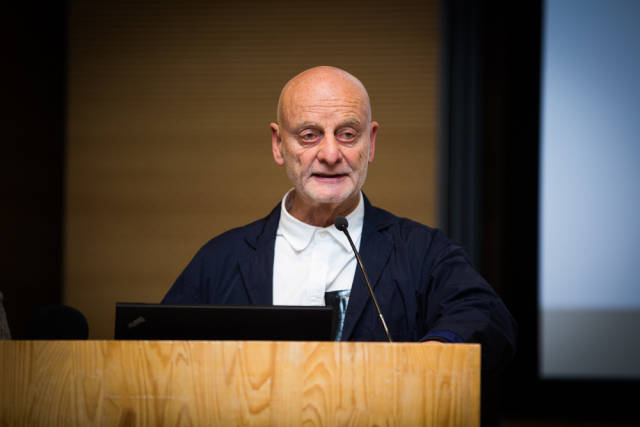
Encounters: When Chinese Contemporary Art Is Facing the West
In the transition to the new century, amidst the tide of globalization, Chinese contemporary art began to garner the attentions from the Western art milieu, particularly during the late 1990s and early 2000s. Uli Sigg forged significant ties with prominent international curators, such as Hou Hanru, Hans Ulrich Obrist, Li Xianting, and Pi Li. This network among collectors, curators, and artists formed a fertile ground where artworks blossomed, nurtured by the professionals. Collaboratively, they engaged in the long-term artistic curations, bolstered by historical research, contextualization, and the oversight of artists’ development.
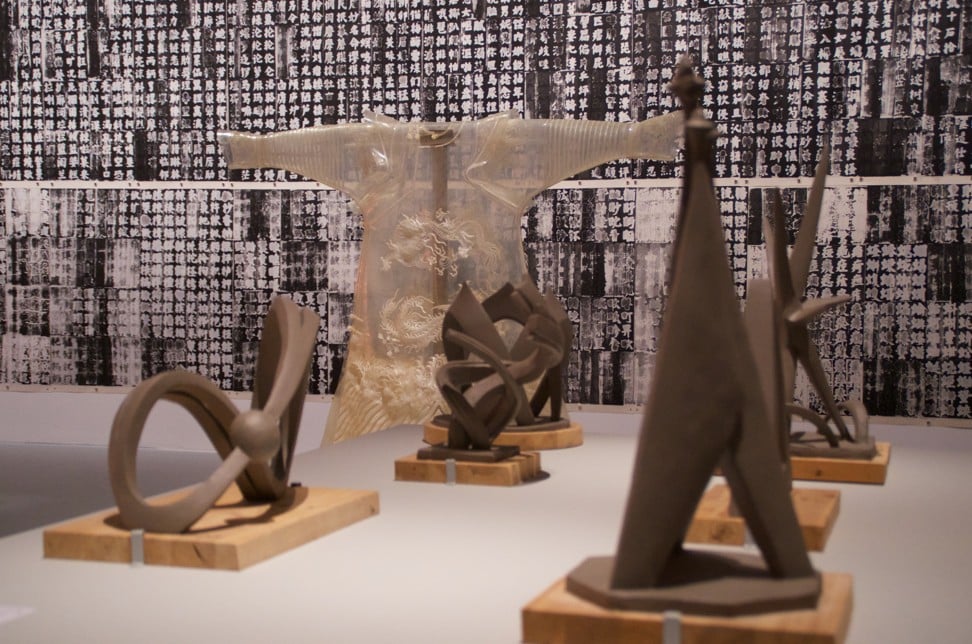
Following the 2021 inauguration of the M+, Uli Sigg’s collection of Chinese contemporary art has been formally unveiled to the public. Since its debut, the museum has welcomed millions of visitors. The trilogy of M+ Sigg Collection Exhibition will provide a major retrospect of Contemporary Chinese art in three chapters. The first chapter titled “From Revolution to Globalization,” captures the spirit of artists and the evolving landscape of contemporary China,following a chronological order. Chinese contemporary artists, influenced by conceptual art, employ a variety of techniques such as appropriation and juxtaposition to portray the multifaceted socio-economic fabric of China during an era marked by transformative change, utilizing microcosmic praise and satire.
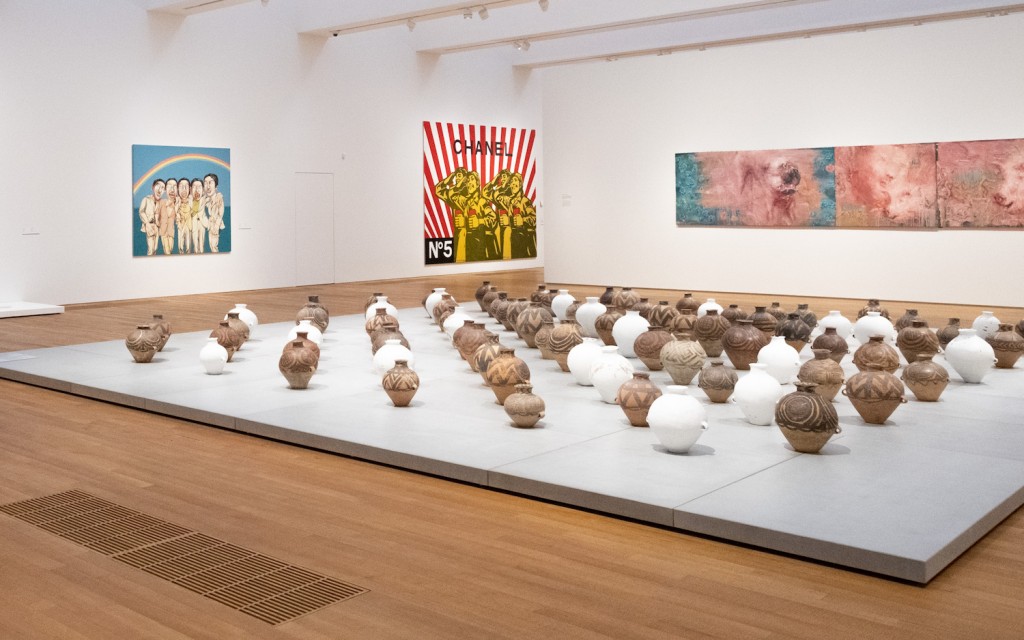
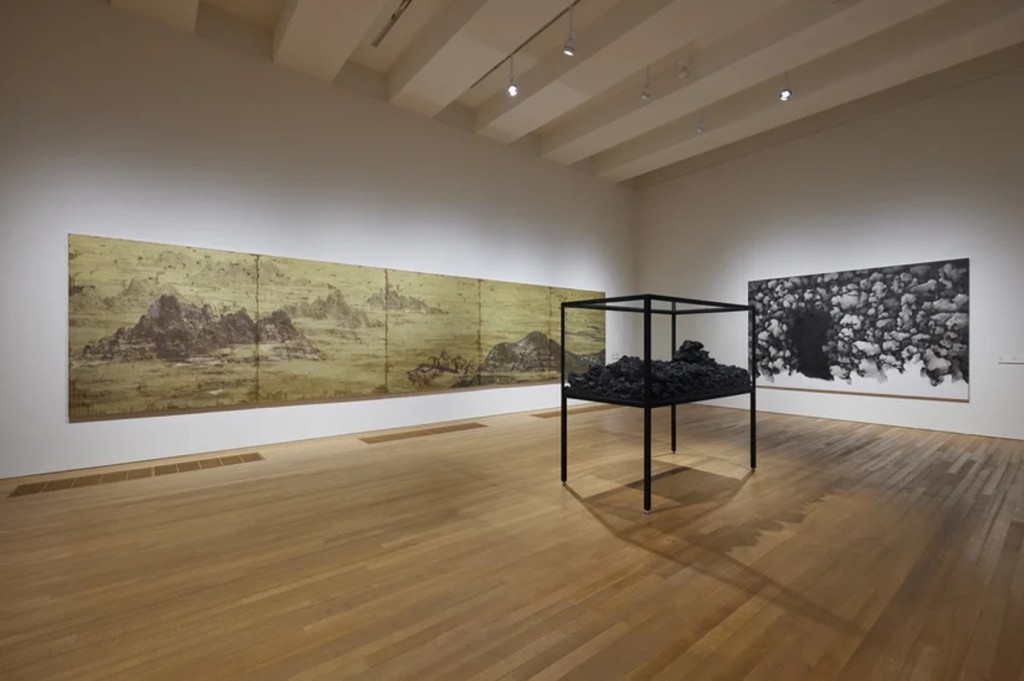
The second exhibition, “Another Story,” shifts its focus to the societal and economic metamorphosis during the 1990s and 2000s, unraveling artists’ thoughts on cultural identity and their perplexities in the dawn of a new era. Through evocative visuals, enigmatic symbolism, a fascination with the transient, and unconventional reinterpretations of tradition, artists present a unique aesthetic and mode of expression within Chinese contemporary art, showcasing alternative perspective beyond mainstream narratives.
In its preface, Sigg discusses the dual significance inherent in the cultural identity of collector and the collected artworks. As a contemporary art collector with a rich global cultural background, Sigg posits Chinese contemporary art as a channel or pathway for probing into the spectrum of modern and post-modern civilizations in the 20th and 21st centuries.
As the intricate web of collected artworks expands, the collector, also assuming the role of a scholar, systematically erodes the blind spots in understanding other cultures. This process of refinement is critical in transcending singular nationalism within art collection, fostering a bidirectional evolution of cultural identity. Mirroring the nuanced approach to cultural exploration, the title of the second exhibition of M+ Sigg collection exhibition series, “Another Story,” suggests a nouveau lens through which to perceive China beyond its traditional narratives. The narratives woven by Chinese contemporary artists carry a weight of significance within broader spatiotemporal contexts.
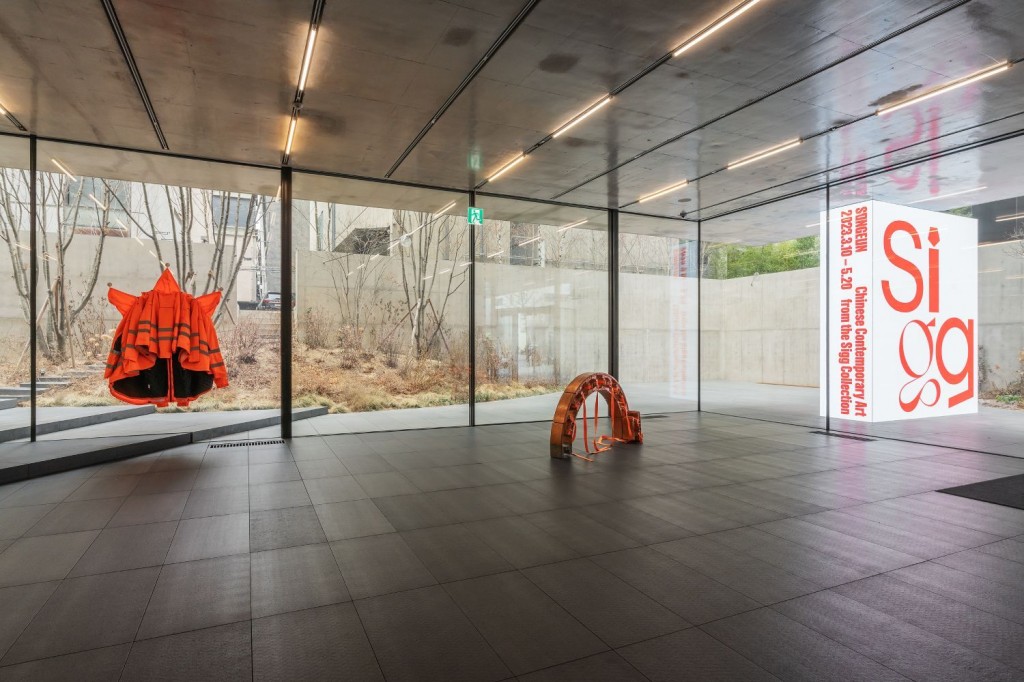
Uli Sigg: “The canon of Chinese contemporary art and artists has not yet been written”
In your foreword to M+ Sigg Collection, you said you have started looking for the forefront of contemporary art as soon as you arrived in China in 1979, the beginning of reformation era. But you could not find art of this kind until 80s and 90s. You started looking for modernity and avant-garde quality of Contemporary Chinese art before the arts is present. How have you become interested in Contemporary Chinese art?
I set sail for China as a business representative.
Before that, I was a business journalist focussing on Near and Middle East.. I remember arriving in China in this time window in which intellectuals and artists, were consuming loads of western literature and philosophy.But they made artworks which to me looked like made 100 years too late. . In late 1994 or early 1995, when again analysing the state of contemporary art I came to the conclusion that Chinese artists had by then really found to a language of their own. While collecting a few pieces according to my personal liking I discovered that no one – individual or institution – had been collecting Chinese contemporary art in any but a purely random manner. Consequently, I changed my focus from that of a private collector searching for works according to his personal taste to one an institution might have: attempting to mirror the art production of the experimental artists living in the PRC, along the time line and across all media.
Over the years, I’ve visited almost 2000 Chinese artists. In 90s, I went directly for the artists to buy artworks, given that no major galleries, agents, or auction houses have set their foot in (the Chinese market).
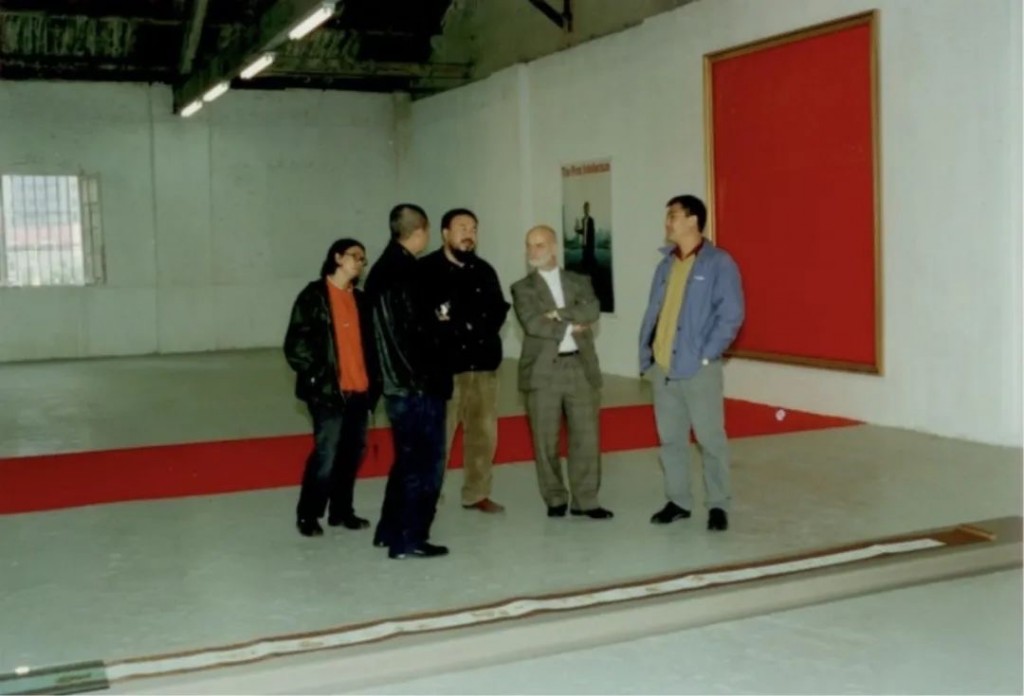
Recounting your immeasurable success in diplomacy, business and art connoisseurship to us, how has your different career roles informed your art collecting?
Over the past 30 years and more, I have bonded connections with individuals and their cultures and societies. I worked as a business person, then later as a diplomat and a researcher-supporter of contemporary art.
Each activity allowed me a different access to the country: one as a business person establishing the first joint-venture company between China and the outside world in its current modernization process – this brought me into close contact with workers and the cadres on ministerial level and had me travel throughout the country at a time when this was a privilege reserved for very few Chinese people. A second access is, as a diplomat who had everything to deal with, I worked on projects from development cooperation in poverty-struck regions, to political analysis, to facilitate human rights dialogues, to economic negotiations on all hierarchical levels.
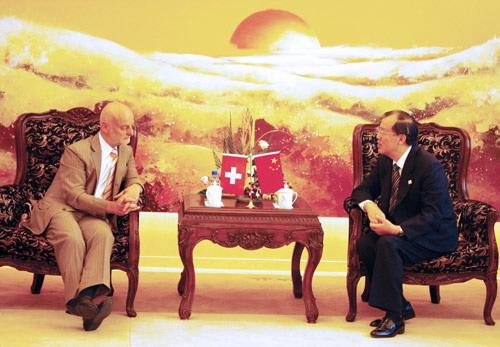
Most of people involved in Contemporary Chinese Art could never live through as many ranges of time as you did. How do you take the art world today? For example, how is art-collecting different now from what it was in 90s and 2000s? How is the art world different from twenty or thirty years ago?
I went to the artists to buy their artworks… and very soon artists introduced me to other artists. I talked to so many artists, not only to understand their art practice, but also to understand the way they react to and produce from those vast materials bulked up in Chinese society. My wife assisted me who spoke Chinese more fluently, and friends from the art community, so we had many conversations with artists.
I was assisting in establishing the first auction of Chinese contemporary art , with Sungari, together with its then-timecurator Leng Lin. I was trying to assist the building of the Chinese art operating system from infancy to full development in many ways.
During this period, first-hand material on Chinese art was lacking ,there were very few publications—books or catalogues on contemporary art, and just a few state-owned magazines. So I thought it to be instrumental to set up an artist award and later art critic award and publish catalogues and books to support artists on the national scale. On a global scale the Sigg collection has done over 20 exhibitions around the world, each accompanied by a published catalogue.
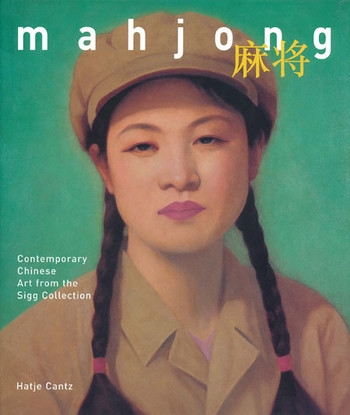
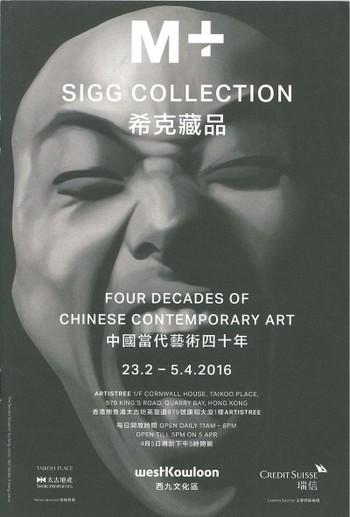
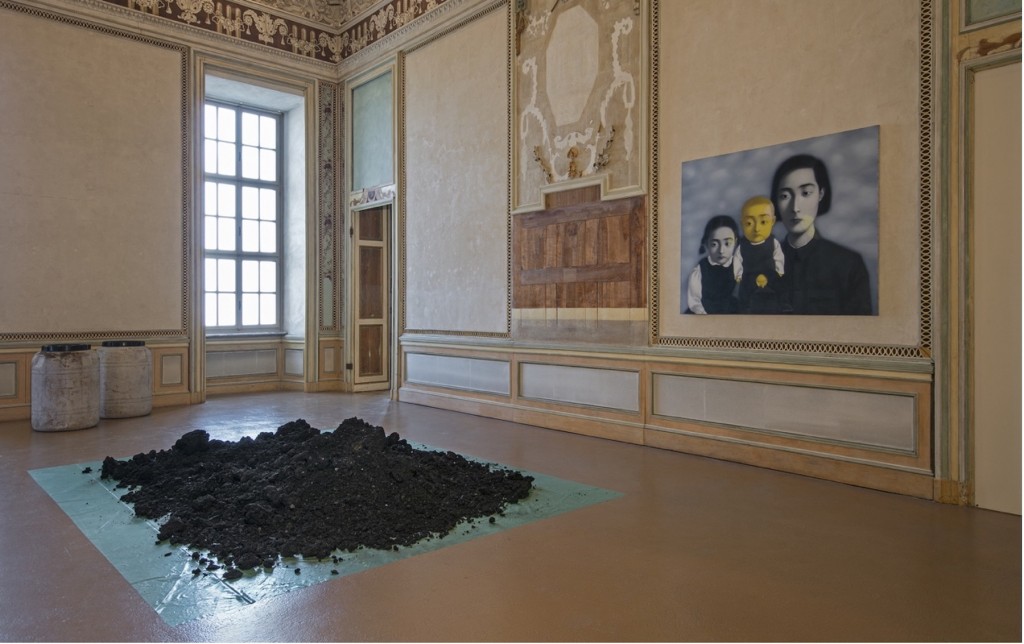
You authored an article “A Typology of Collecting” which reflect profoundly different types of collecting behavior. On such terms, what would be a beneficial way of collecting in the long term?
I list five types of art collecting, each mirroring different motives and outcomes. Nevertheless, every collection is a distillate of the collection’s vision and research efforts – or the lack thereof…
The first one—“I Like art” accumulating style. This is how everyone starts out – yet most people stay there..
Then there is the “Investor” collecting style—this style requires specific market expertise and is usually built with the help of consultants, collecting often by ear rather than by eye. Investor collecting strategies emulate sophisticated patterns known in the financial industry: High risk “Venture” with very young artists or “Early Stage” emerging artists, investment in mature artists with liquid market, big-ticket masterpieces considered safe, and combinations thereof may form a portfolio.
Then the “Status” collecting is the type that as of now has begun to proliferate worldwide. It gathers the must-haves from the global mainstream formed by the 150 or so artists who appear everywhere, whose names are listed in all the auction catalogs… While this collecting style may require less thought, it does drain considerable resources and has one resounding effect: that these collections from New York to Jakarta do in the end look very much alike. This style makes for ever more uniform and therefore monotonous collections. A variant of the “Status” collecting is to accumulate only the so-called masterpieces as defined mainly by auction catalogs. In fact, if gifted with deep pockets and armed with professional advice, anyone can do it. It may even prove to be financially very rewarding if one timely captures the tides of the market favour. In today’s world, this collecting style indeed provides much desired status. It is exclusive in that it allows for easily readable distinction and differentiation from the know-nots within the high society, not to mention from the lowland of the have-nots.
Then, it is what I call the “Focused” collecting style. The focus is a core idea, a concept, a logic that binds the works which otherwise remain random disconnected dots. It leverages single works to create additional meaning through their togetherness, and therefore advances comprehension. This focus is a very difficult decision for any collector to take since it implies exclusion and discipline in view of things very tempting. Nevertheless, it gives a collection a distinct character and what we may sense as soul.
The fifth–the “Web “collecting style, If one would want to construct a hierarchy amongst collecting styles, then the most complex way is weaving a collection as a web. That is to say, having decided on a focus, to collect works which web the fullest context; with works shedding light on, explaining and opening up further spaces for this core idea, to best represent and illustrate it. And very importantly, it is not simply about lining up masterpieces like a string of pearls. Masterpieces indeed, but in contemporary art attributions as such come and go; there is nothing older or more outdated than an auction catalog of fifteen years of age. “Web” collecting is just as much about finding the pieces which may go unattended, or ascribed to artists considered second tier at times – which in itself is subject to change over time – to fill the perception gaps, to narrate the underlying subtexts and to ultimately bring a collection to the fore.
(editor’s note: For the readers supposedly not having such background, the editor decides to include this Q&A which abbreviatedly transcribes a summary of Dr. Sigg article, “A Typology of Art Collecting.” She hopes some omissions are okay and overall, it still does just to Dr. Sigg’s original insight.) – this note is not a formal part of the article.
Regarding the M+ exhibition of the Sigg Collection. The Exhibition is in three phases, “From Revolution to Globalism”, “Another Story”, and an upcoming finale. How did you and Dr. Pi Li work together and exchange new insights into the Chinese Contemporary Art through this experience?
When we organized these exhibitions, it was important to share the curating with someone who knew my collection very well.
I’ve known Dr. Pi Li for many years. And we both aimed to deflect attention from a purely “nationalist” or “localist” point of view and do justice to the original historical context in which these works were produced. – and to work out the synchronizing patterns between the development of contemporary art and the world around. The museum team, of course, have contributed greatly to actualizing the exhibition in many aspects.
In 2018, the M+ Museum together with you founded the Sigg Prize which was born out of CCAA to support Chinese contemporary arts. On Jan.4th, Sigg Prize announces its winner, Wang Tuo. What do you think of with this year’s winner, Wang Tuo’s works?
In the 90s, there wasn’t much of an public debate in China that went beyond the academic circles of the contemporary art world, so I established and conducted the CCAA (Chinese Contemporary Art Award and Art Critic Award) as from 1998. All these activities have provided rich context for a wider audience in China and abroad
For Sigg Prize, the jury consists again of very prominent personalities such as the directors of MOMA New York, TATE London, Power Station of Art,Shanghai, of M+,artist Xu Bing, etc, and myself.Also, the candidates pool is bigger as itnow includes the artists from the Greater China and Chinese diaspora regions.
All the six candidates are exceptional young artists. Wang Tuo’s video works combine both fictional and real perspectives, expanding to embrace both the individual and the master narratives. And the idea is delivered in a very clever way.
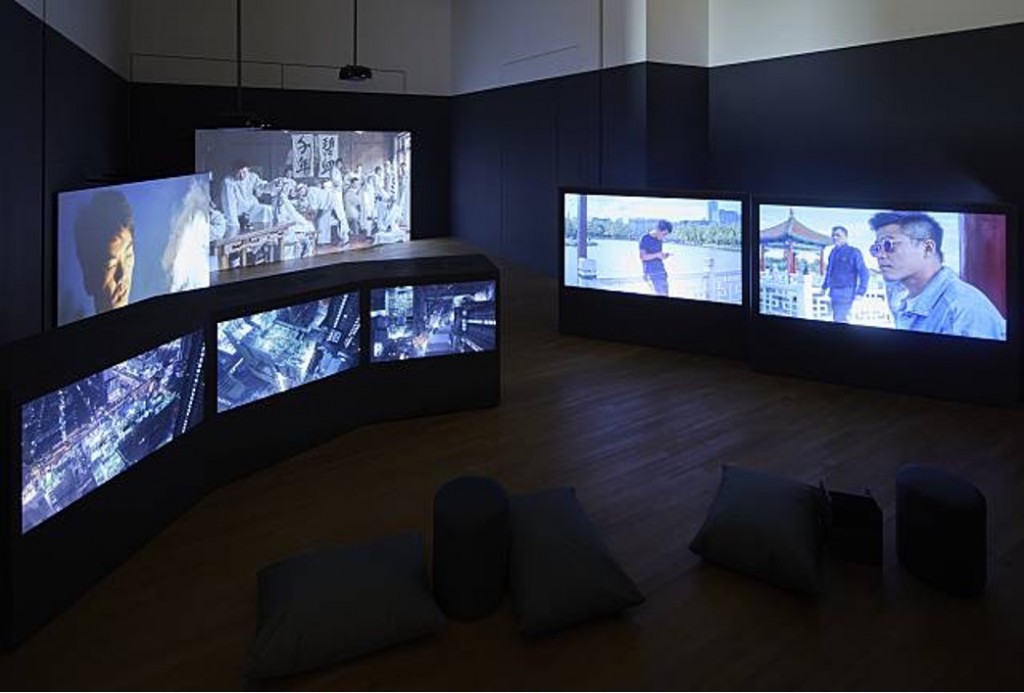
What do you think of the generation of new Chinese artists born after 85’s or 90’s?
This generation has access to information from all around the world. Of course, the older generation now has the same, but the younger artists are the first generation to grow up with the internet and digital art – and with many of them having studied abroad. They kind of dissociate themselves from their predecessors. But they have other constraints, with having to work with less freedom of expression. It is like driving a car with the handbrake pulled.
On the other hand, Chinese artists are living in a very dynamic society with great tensions which might fuel creativity in ways which you may not have elsewhere…
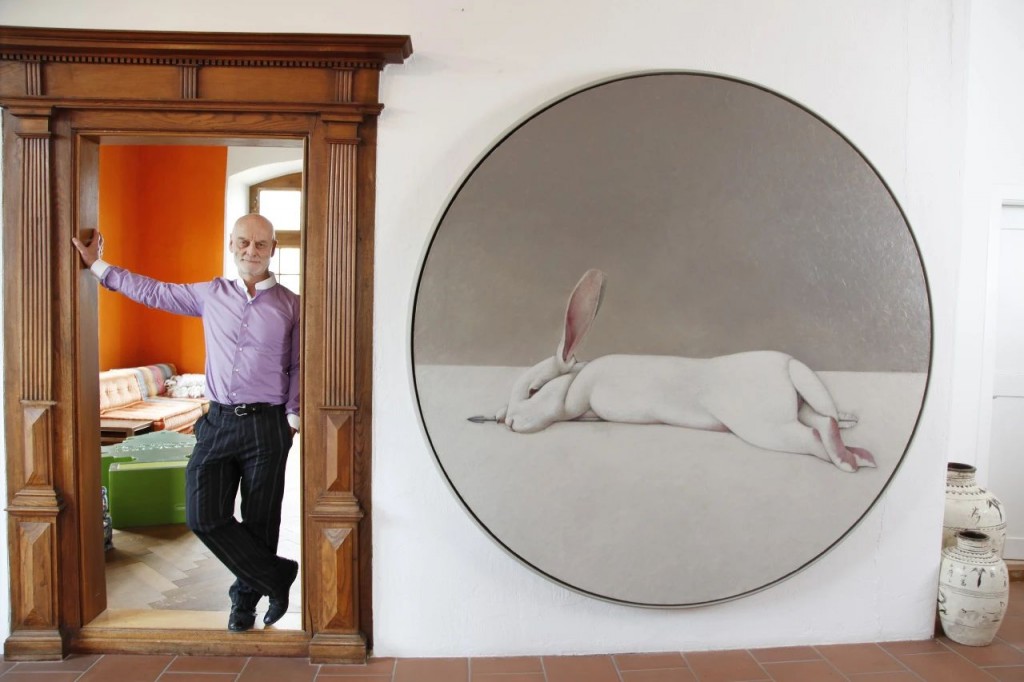
What would be the focus of your collecting style in future?
The canon of Chinese contemporary art and artists has not yet been written. A broader perspective inclusive of the global discourse on contemporary art, through my collection, will add to this endeavor which is in process now. But one can now set aside the encyclopaedic collecting since there are so many institutions and collectors caring about preserving what contemporary artists contribute to their culture. I now focus more on my own taste, and on commissioning works where at times I get involved in the creative process, rather than buying a finished product.





